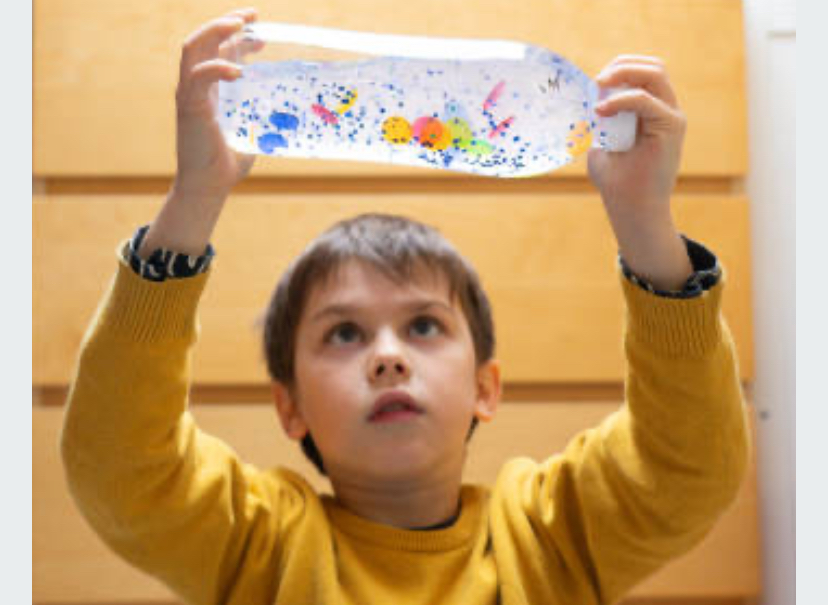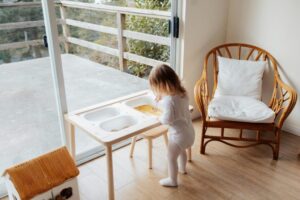Looking for a simple, engaging, and incredibly calming tool for your child (or even yourself)? Look no further than the humble yet powerful sensory bottle! While we won’t be recommending specific brands, the concept of sensory bottles is universally loved and earns our top rating for its versatility, ease of creation, and profound benefits.
What are Sensory Bottles?
At their core, sensory bottles are clear, sealed containers (typically plastic bottles for safety) filled with various liquids and objects designed to create visually stimulating, calming, or exploratory experiences. Often called “calm-down bottles,” “glitter jars,” “discovery bottles,” or “mindfulness bottles,” they offer a contained world of movement, color, and wonder.
Why We Love Them (And You Will Too!)
Sensory bottles are a parenting and therapeutic superpower for so many reasons:
- Simple & Affordable: Many can be made with common household items, making them an excellent DIY project.
- Portable: Easily carried in a bag, they’re perfect for on-the-go regulation – at appointments, during travel, or just out and about.
- Quiet & Non-Disruptive: Unlike some noisy toys, sensory bottles offer a silent, focused activity.
- Versatile: They appeal to a wide age range, from infants (under supervision) to toddlers, preschoolers, school-aged children, and even adults.
- Effective Regulation Tool: They provide a safe, predictable, and engaging way to manage big emotions, promote focus, and encourage mindfulness.
- Screen-Free Engagement: A fantastic alternative to digital devices, fostering natural curiosity and observation skills.
The Wonderful World of Sensory Benefits
Sensory bottles are a feast for the senses, primarily focusing on visual input but often incorporating others:
- Visual Stimulation:
- Tracking & Focus: Observing glitter slowly fall, or objects bobbing, helps develop eye-tracking and sustained attention.
- Color Recognition: Vibrant colors captivate and teach about hues.
- Pattern Recognition: Watching repetitive movements can be mesmerizing.
- Calming Effect: The slow, predictable movement of liquids and objects can be incredibly soothing for an overstimulated mind.
- Proprioceptive/Vestibular (Subtle): The act of shaking, turning, and tilting the bottle provides gentle input to the body’s sense of position and movement.
- Auditory (Optional): Bottles filled with dry items like rice, beads, or small jingling bells can offer soft, satisfying sounds.
- Emotional Regulation: Serving as a visual anchor, they help children process emotions like anger, anxiety, or excitement by redirecting focus and encouraging deep breathing as they watch the contents settle. They promote mindfulness and a sense of calm.
Who Would Love Sensory Bottles? (Sensory Seekers & Beyond!)
Sensory bottles offer broad appeal, but they are particularly beneficial for certain sensory profiles:
- Visual Seekers: Children who crave visual input will be captivated by the colors, movement, and sparkle. They provide a safe and contained outlet for this seeking behavior.
- Over-Responsive/Highly Sensitive Individuals: For those easily overwhelmed by too much sensory input, the predictable, slow-moving elements of a calming bottle can be incredibly grounding and help reduce anxiety. It’s a “visual comfort blanket.”
- Under-Responsive/Low Arousal Individuals: While often used for calming, some sensory bottles (especially those with brighter colors or more dynamic elements) can also serve as a gentle way to awaken and engage an under-responsive visual system.
- Fidgeters: They offer a contained, non-disruptive way to engage hands and eyes, helping to improve focus during quiet times or transitions.
- Individuals Needing Emotional Regulation: Anyone struggling with big emotions – anger, anxiety, frustration – can benefit from the mindful practice of watching the contents settle, which encourages their own body and mind to settle too.
- Children Developing Fine Motor Skills: Manipulating the bottle (shaking, tilting, turning) involves coordination and grip.
Types of Sensory Bottles to Explore
The possibilities are endless, limited only by your imagination and what you have on hand!
- Calm-Down/Glitter Jars: The most popular type, typically made with water, clear glue or glycerin, and lots of glitter. The slow fall of the glitter is incredibly mesmerizing and calming.
- Discovery/I-Spy Bottles: Filled with dry materials like rice, beans, or sand, along with small hidden objects (miniature toys, beads, buttons). Children shake and turn the bottle to find the hidden treasures.
- Themed Bottles: Create a miniature world!
- Ocean Bottle: Water, blue food coloring, small plastic sea creatures, shells, glitter.
- Space Bottle: Dark liquid, glitter, small star confetti, glow-in-the-dark elements.
- Seasonal Bottles: Leaves and twigs for autumn, fake snow and miniature trees for winter, flowers and beads for spring.
- Science Bottles:
- Oil & Water Lava Lamp: Water, oil, food coloring, and an Alka-Seltzer tablet create bubbling effects.
- Density Bottle: Layers of different liquids (honey, dish soap, water, oil) that separate by density.
- Sound Bottles: Filled with various dry materials like rice, pasta, pebbles, or bells to create different auditory experiences when shaken. Always ensure these are securely sealed, especially for younger children.
- Texture Bottles (External): Wrap the outside of a visual sensory bottle with different textures (fabric scraps, sandpaper, bubble wrap) to add a tactile element without affecting the internal contents.
Similar Things People Might Like
If you love sensory bottles, you might also enjoy these related sensory tools and activities:
- Liquid Timers/Fidget Toys: Small, contained units with liquids and oil that drip or flow, offering similar visual calming.
- Light Tables/Pads: Provide a glowing surface for exploring translucent materials, often used with colored blocks or sensory bottles themselves.
- Sensory Bins: Bins filled with dry materials like rice, beans, pasta, or water, along with scoops, cups, and small toys for open-ended play and exploration.
- Bubble Tubes: Tall, illuminated tubes with bubbling water and floating fish, providing intense visual stimulation and calming effects.
- Weighted Blankets/Stuffed Animals: Offer deep pressure input, which can be very calming and regulating for many individuals.
Sensory bottles truly are a little bit of magic in a bottle. Whether you’re looking to calm a tantrum, encourage focus, or simply provide a moment of wonder, these simple tools are incredibly powerful. So, gather your materials and start uncorking some calm and sparking joy today!


